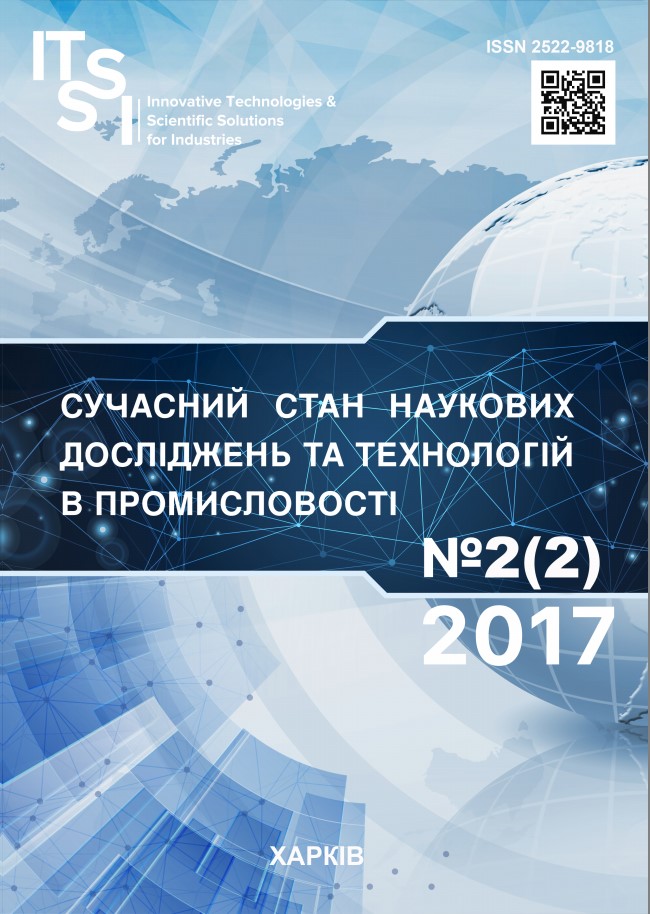METHOD OF BUILDING THE SEMANTIC NETWORK OF DISTRIBUTED SEARCH IN E-LEARNING
DOI:
https://doi.org/10.30837/2522-9818.2017.2.062Keywords:
stratified semantic network, intension, extension, decision tree, e-learning, intelligent agentAbstract
The subject matter of the article is semantic networks of distributed search in e-learning. The goal is to synthesize a decision tree and a stratified semantic network that allows network intelligent agents in the e-learning to construct inference mechanisms according to the required attributes and specified relationships. The following results are obtained. The model of the base decision tree in e-learning is suggested. To simulate the decision tree in e-learning, the logic of predicates of the first order was used, which enabled making calculations both at the nodes of the tree and at its edges, and making decisions based on the results of calculations; applying partitioning operations to select individual fragments; specifying the solutions with further expanding the inference upper vertices; expanding the multi-level model vertically and horizontally. At the first stage of the model formalization, the graph of the base decision tree was constructed, whose nodes represent a substructure capable of performing an autonomous search subtask. The second stage is filling the base tree with semantic information and organizing its interaction with network intelligent agents. To provide the tree branches of decisions in e-learning with information, the process of stratified expansion of the base decision tree was suggested where the components of the decision node were detailed and the links among the received sub-units were established both on the horizontal and on the vertical levels. It is shown that in order to establish a set of goals and search problems on the studied structure, it suffices to determine: the graphs of goals and search problems for each node type; a set of edges that determine the dependence of the execution of search targets for the nodes that are not of the same type; a set of pointers that establish probable relationships for redistributing resources in accordance with the requirements of intelligent agents; communication mapping. The developed mathematical model of the base decision tree enabled a stratified expansion. Determining intensions and extensions allowed stratified semantic networks to be used for searching. Conclusions. The method of synthesizing a decision tree and a stratified semantic network is suggested; this method enables considering them as closely interrelated ones in the context of distributed search in e-learning. As a result, the process of searching and designing inference mechanisms can be formalized by the network intelligent agents according to the required attributes and given relationships.
References
Kuchuk, G., Kharchenko, V., Kovalenko, A. and Ruchkov, E. (2016), "Approaches to Selection of Combinatorial Algorithm for Optimization in Network Traffic Control of Safety-Critical Systems", Proceedings of IEEE East-West Design & Test Symposium (EWDTS’2016), P. 384–389.
Gandal, Neil (2013), “The dynamics of competition in the internet search engine market.”, Handbook of Research on Effective Advertising Strategies in the Social Media Age, Vol. 19, P. 1103–1117, DOI: 10.1016/S0167-7187(01)00065-0
Jawadekar, Waman S. (2011), “Knowledge Management: Tools and Technology”, Knowledge management: Text & Cases, New Delhi: Tata McGraw-Hill Education Private Ltd, 319 p., ISBN 978-0-07-07-0086-4.
Voorhees, E.M. (2017), Natural Language Processing and Information Retrieval, available at :
http://citeseer.ist.psu.edu/voorhees99.natural.html
Tauber D. (2004), RDF, available at : http://xmlhack.ru/texts//D6-RDF
W3C GRDDL Specification, available at : http://www/w3.org/RDF/YR/GRDDL
Risvik, K.M. and Michelsen, R. (2002), “Search engines and web dynamics”, Computer Networks, Vol. 39, no. 3. P. 289–302.
Manner, J. (2004), Mobility Related Terminology, Network Working Group, RFC 3753, 224 p.
Ian H. Witten, Eibe Frank and Mark A. Hall (2011), Data Mining: Practical Machine Learning Tools and Techniques, 3rd Edition, Morgan Kaufmann, 664 p., ISBN 9780123748560.
Fridman, A. (2004), “Knowledge Integrating in Situative Modelling System for Nature-Technical Complexes”, Proc. European Simulation and Modelling Conference (ESMc2004), Paris, France, 2004, P. 49–58.
Kuchuk, G. A., Kovalenko, A. A., Mozhaev, A. A. (2010), "An Approach to Development of Complex Metric for Multiservice Network Security Assessment", Statistical Methods of Signal and Data Processing (SMSDP – 2010): Proceedings of Int. Conf., NAU, RED, IEEE Ukraine section joint SP. Kyiv, P. 158–160.
Udaya, Sri K. and Vamsi, Krishna T. V. (2014), “E-Learning : Technological Development in Teaching for school kids”, International Journal of Computer Science and Information Technologies, P. 6124–6126.
Downloads
How to Cite
Issue
Section
License
Copyright (c) 2018 Nina Kuchuk, Roman Artiukh, Artem Nechausov

This work is licensed under a Creative Commons Attribution-NonCommercial-ShareAlike 4.0 International License.
Our journal abides by the Creative Commons copyright rights and permissions for open access journals.
Authors who publish with this journal agree to the following terms:
Authors hold the copyright without restrictions and grant the journal right of first publication with the work simultaneously licensed under a Creative Commons Attribution-NonCommercial-ShareAlike 4.0 International License (CC BY-NC-SA 4.0) that allows others to share the work with an acknowledgment of the work's authorship and initial publication in this journal.
Authors are able to enter into separate, additional contractual arrangements for the non-commercial and non-exclusive distribution of the journal's published version of the work (e.g., post it to an institutional repository or publish it in a book), with an acknowledgment of its initial publication in this journal.
Authors are permitted and encouraged to post their published work online (e.g., in institutional repositories or on their website) as it can lead to productive exchanges, as well as earlier and greater citation of published work.














